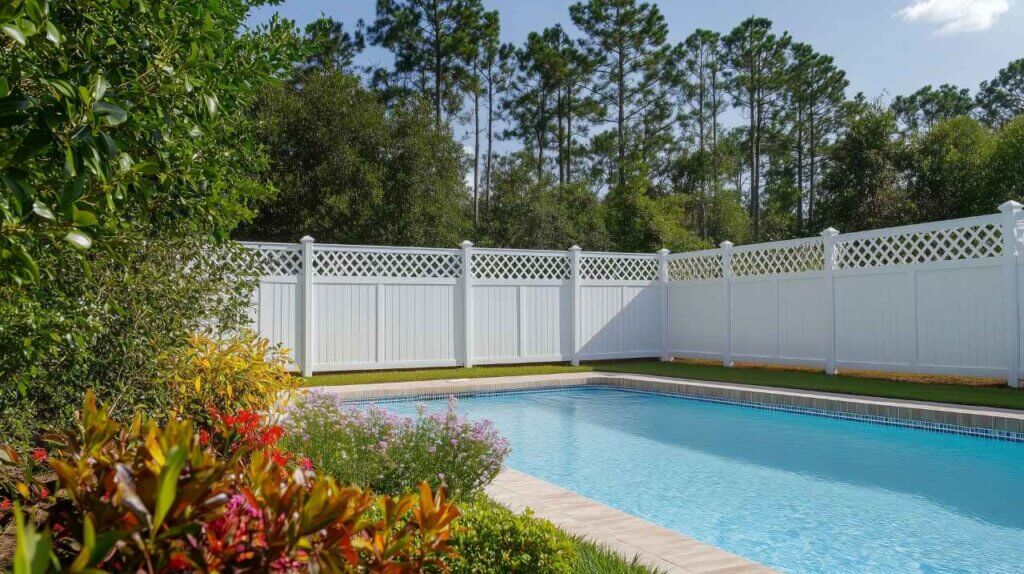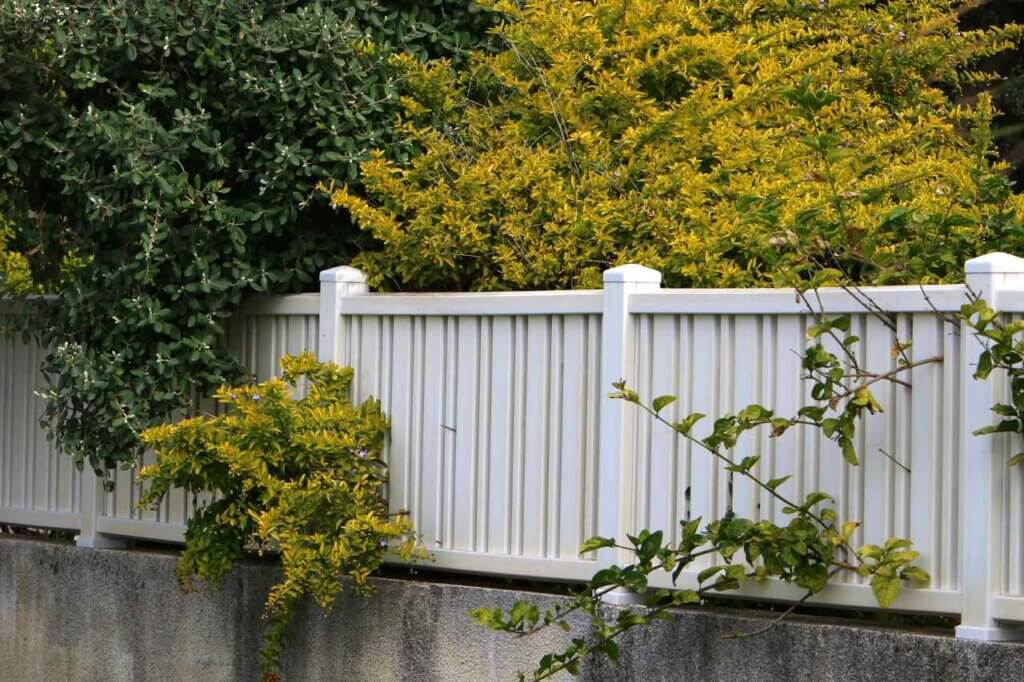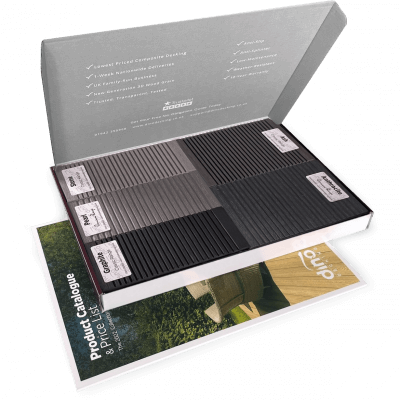5 Composite Decking Lighting Ideas
Our composite decking looks great in any setting, but you can really make your outdoor spaces shine with our decking
Products in Stock
Lowest Prices
Express Delivery
10-Year Warranty
Early April Sale. Up To 15% Off.

At Dino Decking, we’re pretty frank about it – we’re all about composite decking over here. But if you’re thinking about installing a new vinyl fence around your property, we’re still happy to go over the basics. After all, before you commit to vinyl for your boundary needs, it’s worth understanding exactly what you’re getting into. Let’s explore the complete picture of vinyl fencing to help you make an informed decision for your home.
Vinyl fencing is made from polyvinyl chloride (PVC), a type of plastic that’s been engineered specifically for outdoor use. Unlike wood, it doesn’t require painting or staining, and unlike metal, it won’t rust or corrode over time. Manufacturers typically add UV stabilisers and impact modifiers to enhance its performance in various weather conditions and environments.
When you’re looking at vinyl fencing, you’ll find it comes in various styles, from privacy panels to picket designs, and in a range of colours—though white and tan remain the most common options. The material is hollow with internal reinforcement that provides strength while keeping the weight manageable.
Modern vinyl fencing offers clean lines and a polished appearance that many homeowners find attractive. When you’re aiming for a neat, uniform look throughout your property, vinyl delivers consistency that’s hard to match with natural materials. The colour runs throughout the material rather than being applied as a surface coating, which means scratches won’t reveal a different colour underneath.
Many vinyl fencing systems are designed with DIY-friendly features like pre-fabricated panels and components that slot together. If you’re handy with basic tools, you might be able to install your fence yourself, saving on workman costs. Even if you hire professionals, the installation is typically faster than traditional materials, which can translate to lower installation charges.
The upfront cost of vinyl fencing is significantly higher than wood—sometimes two to three times more expensive. This initial investment can be a substantial hurdle if you’re working with a tight budget. While the long-term value proposition makes sense, not everyone can manage the higher upfront expenditure.
Despite advances in manufacturing techniques, vinyl can’t perfectly replicate the warm, organic look of wood or the classic appearance of wrought iron. Alternatively, our composite materials for privacy fences offer a more natural aesthetic while still providing low maintenance benefits. If authenticity is high on your priority list, vinyl might leave you wanting.
In very hot climates, vinyl can expand, potentially causing warping or buckling. Conversely, in extremely cold conditions, it can become brittle and more susceptible to impact damage. While quality vinyl is engineered to minimise these issues, they remain considerations if you live in an area with temperature extremes.
When wood fencing is damaged, you can often replace just a slat or section. With vinyl, repairs aren’t always so straightforward. The material doesn’t accept paint well, so if a section becomes discoloured or damaged, you might need to replace entire panels to maintain a uniform appearance. This can make repairs more costly and complicated.
Vinyl is a petroleum-based product and isn’t biodegradable. While it’s long-lasting, which reduces the need for replacement, its production and eventual disposal do raise environmental concerns. Additionally, vinyl can release toxic compounds if burned, presenting disposal challenges at the end of its useful life.

Traditional wood fencing offers natural beauty and can be less expensive initially, but requires regular maintenance to prevent rot, warping, and insect damage. Vinyl eliminates these maintenance headaches but lacks the authentic character of real wood. Your choice might come down to whether you value natural aesthetics over convenience.
Metal fencing options like aluminium or steel offer exceptional strength and security, but can be prone to rusting without proper coatings. Vinyl won’t rust or corrode, though it doesn’t provide the same level of security as metal. Metal fencing also typically has a higher price point than vinyl, making vinyl a more budget-friendly option if security isn’t your primary concern.
Composite fencing represents something of a middle ground between vinyl and natural wood. Composite typically offers a more wood-like appearance than vinyl while still providing good durability and relatively low maintenance requirements. However, it often comes with an even higher price tag than vinyl.
So – is vinyl fencing the right choice for your home? Really, the answer depends on your specific priorities, budget, and local climate conditions. If you’re looking for a low-maintenance option with good longevity and don’t mind the synthetic appearance, vinyl offers compelling advantages. However, if you’re working with a limited budget or prefer the look of natural materials, you might want to explore alternatives.
You can learn more about how these materials compare in our detailed vinyl and composite fencing comparison.

Our sample pack contains a sample piece of each colour currently available. Order your free sample pack today to compare the colours and get a true feeling of the Dino Decking range!
Our composite decking looks great in any setting, but you can really make your outdoor spaces shine with our decking
If the idea of having rats under your decking makes you shiver, don’t worry. We’ll let you know the signs
Business hours
Monday: 09:00 – 17:30
Tuesday: 09:00 – 17:30
Wednesday: 09:00 – 17:30
Thursday: 09:00 – 17:30
Friday: 09:00 – 17:30
Saturday: Closed
Sunday: Closed
Contact us
01942 355968
support@dino.co.uk
Collection Address: Unit 1 Wetheral Close Hindley Ind Estate Wigan Greater Manchester North West WN2 4HS
Pages
Products
Testing
Copyright 2025 Dino Decking Ltd All Rights Reserved.
VAT Number: GB296097848.
Company Number: 10837233.